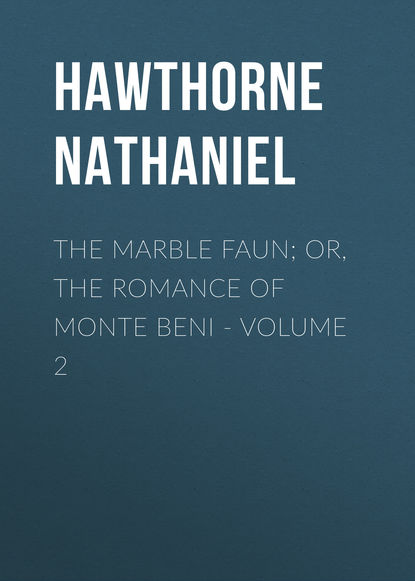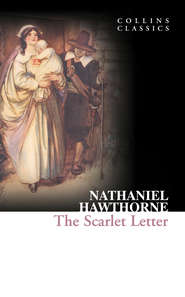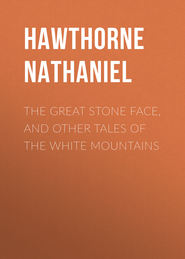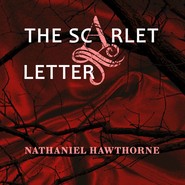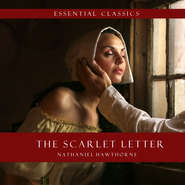По всем вопросам обращайтесь на: info@litportal.ru
(©) 2003-2024.
✖
The Marble Faun; Or, The Romance of Monte Beni - Volume 2
Настройки чтения
Размер шрифта
Высота строк
Поля
Tomaso, the old butler, who was standing by the table, and enjoying the praises of the wine quite as much as if bestowed upon himself, made answer, — “We have a tradition, Signore,” said he, “that this rare wine of our vineyard would lose all its wonderful qualities, if any of it were sent to market. The Counts of Monte Beni have never parted with a single flask of it for gold. At their banquets, in the olden time, they have entertained princes, cardinals, and once an emperor and once a pope, with this delicious wine, and always, even to this day, it has been their custom to let it flow freely, when those whom they love and honor sit at the board. But the grand duke himself could not drink that wine, except it were under this very roof!”
“What you tell me, my good friend,” replied Kenyon, “makes me venerate the Sunshine of Monte Beni even more abundantly than before. As I understand you, it is a sort of consecrated juice, and symbolizes the holy virtues of hospitality and social kindness?”
“Why, partly so, Signore,” said the old butler, with a shrewd twinkle in his eye; “but, to speak out all the truth, there is another excellent reason why neither a cask nor a flask of our precious vintage should ever be sent to market. The wine, Signore, is so fond of its native home, that a transportation of even a few miles turns it quite sour. And yet it is a wine that keeps well in the cellar, underneath this floor, and gathers fragrance, flavor, and brightness, in its dark dungeon. That very flask of Sunshine, now, has kept itself for you, sir guest (as a maid reserves her sweetness till her lover comes for it), ever since a merry vintage-time, when the Signore Count here was a boy!”
“You must not wait for Tomaso to end his discourse about the wine, before drinking off your glass,” observed Donatello. “When once the flask is uncorked, its finest qualities lose little time in making their escape. I doubt whether your last sip will be quite so delicious as you found the first.”
And, in truth, the sculptor fancied that the Sunshine became almost imperceptibly clouded, as he approached the bottom of the flask. The effect of the wine, however, was a gentle exhilaration, which did not so speedily pass away.
Being thus refreshed, Kenyon looked around him at the antique saloon in which they sat. It was constructed in a most ponderous style, with a stone floor, on which heavy pilasters were planted against the wall, supporting arches that crossed one another in the vaulted ceiling. The upright walls, as well as the compartments of the roof, were completely Covered with frescos, which doubtless had been brilliant when first executed, and perhaps for generations afterwards. The designs were of a festive and joyous character, representing Arcadian scenes, where nymphs, fauns, and satyrs disported themselves among mortal youths and maidens; and Pan, and the god of wine, and he of sunshine and music, disdained not to brighten some sylvan merry-making with the scarcely veiled glory of their presence. A wreath of dancing figures, in admirable variety of shape and motion, was festooned quite round the cornice of the room.
In its first splendor, the saloon must have presented an aspect both gorgeous and enlivening; for it invested some of the cheerfullest ideas and emotions of which the human mind is susceptible with the external reality of beautiful form, and rich, harmonious glow and variety of color. But the frescos were now very ancient. They had been rubbed and scrubbed by old Stein and many a predecessor, and had been defaced in one spot, and retouched in another, and had peeled from the wall in patches, and had hidden some of their brightest portions under dreary dust, till the joyousness had quite vanished out of them all. It was often difficult to puzzle out the design; and even where it was more readily intelligible, the figures showed like the ghosts of dead and buried joys, — the closer their resemblance to the happy past, the gloomier now. For it is thus, that with only an inconsiderable change, the gladdest objects and existences become the saddest; hope fading into disappointment; joy darkening into grief, and festal splendor into funereal duskiness; and all evolving, as their moral, a grim identity between gay things and sorrowful ones. Only give them a little time, and they turn out to be just alike!
“There has been much festivity in this saloon, if I may judge by the character of its frescos,” remarked Kenyon, whose spirits were still upheld by the mild potency of the Monte Beni wine. “Your forefathers, my dear Count, must have been joyous fellows, keeping up the vintage merriment throughout the year. It does me good to think of them gladdening the hearts of men and women, with their wine of Sunshine, even in the Iron Age, as Pan and Bacchus, whom we see yonder, did in the Golden one!”
“Yes; there have been merry times in the banquet hall of Monte Beni, even within my own remembrance,” replied Donatello, looking gravely at the painted walls. “It was meant for mirth, as you see; and when I brought my own cheerfulness into the saloon, these frescos looked cheerful too. But, methinks, they have all faded since I saw them last.”
“It would be a good idea,” said the sculptor, falling into his companion’s vein, and helping him out with an illustration which Donatello himself could not have put into shape, “to convert this saloon into a chapel; and when the priest tells his hearers of the instability of earthly joys, and would show how drearily they vanish, he may point to these pictures, that were so joyous and are so dismal. He could not illustrate his theme so aptly in any other way.”
“True, indeed,” answered the Count, his former simplicity strangely mixing itself up with ah experience that had changed him; “and yonder, where the minstrels used to stand, the altar shall be placed. A sinful man might do all the more effective penance in this old banquet hall.”
“But I should regret to have suggested so ungenial a transformation in your hospitable saloon,” continued Kenyon, duly noting the change in Donatello’s characteristics. “You startle me, my friend, by so ascetic a design! It would hardly have entered your head, when we first met. Pray do not, — if I may take the freedom of a somewhat elder man to advise you,” added he, smiling, — “pray do not, under a notion of improvement, take upon yourself to be sombre, thoughtful, and penitential, like all the rest of us.”
Donatello made no answer, but sat awhile, appearing to follow with his eyes one of the figures, which was repeated many times over in the groups upon the walls and ceiling. It formed the principal link of an allegory, by which (as is often the case in such pictorial designs) the whole series of frescos were bound together, but which it would be impossible, or, at least, very wearisome, to unravel. The sculptor’s eyes took a similar direction, and soon began to trace through the vicissitudes, — once gay, now sombre, — in which the old artist had involved it, the same individual figure. He fancied a resemblance in it to Donatello himself; and it put him in mind of one of the purposes with which he had come to Monte Beni.
“My dear Count,” said he, “I have a proposal to make. You must let me employ a little of my leisure in modelling your bust. You remember what a striking resemblance we all of us — Hilda, Miriam, and I — found between your features and those of the Faun of Praxiteles. Then, it seemed an identity; but now that I know your face better, the likeness is far less apparent. Your head in marble would be a treasure to me. Shall I have it?”
“I have a weakness which I fear I cannot overcome,” replied the Count, turning away his face. “It troubles me to be looked at steadfastly.”
“I have observed it since we have been sitting here, though never before,” rejoined the sculptor. “It is a kind of nervousness, I apprehend, which, you caught in the Roman air, and which grows upon you, in your solitary life. It need be no hindrance to my taking your bust; for I will catch the likeness and expression by side glimpses, which (if portrait painters and bust makers did but know it) always bring home richer results than a broad stare.”
“You may take me if you have the power,” said Donatello; but, even as he spoke, he turned away his face; “and if you can see what makes me shrink from you, you are welcome to put it in the bust. It is not my will, but my necessity, to avoid men’s eyes. Only,” he added, with a smile which made Kenyon doubt whether he might not as well copy the Faun as model a new bust, — “only, you know, you must not insist on my uncovering these ears of mine!”
“Nay; I never should dream of such a thing,” answered the sculptor, laughing, as the young Count shook his clustering curls. “I could not hope to persuade you, remembering how Miriam once failed!”
Nothing is more unaccountable than the spell that often lurks in a spoken word. A thought may be present to the mind, so distinctly that no utterance could make it more so; and two minds may be conscious of the same thought, in which one or both take the profoundest interest; but as long as it remains unspoken, their familiar talk flows quietly over the hidden idea, as a rivulet may sparkle and dimple over something sunken in its bed. But speak the word, and it is like bringing up a drowned body out of the deepest pool of the rivulet, which has been aware of the horrible secret all along, in spite of its smiling surface.
And even so, when Kenyon chanced to make a distinct reference to Donatello’s relations with Miriam (though the subject was already in both their minds), a ghastly emotion rose up out of the depths of the young Count’s heart. He trembled either with anger or terror, and glared at the sculptor with wild eyes, like a wolf that meets you in the forest, and hesitates whether to flee or turn to bay. But, as Kenyon still looked calmly at him, his aspect gradually became less disturbed, though far from resuming its former quietude.
“You have spoken her name,” said he, at last, in an altered and tremulous tone; “tell me, now, all that you know of her.”
“I scarcely think that I have any later intelligence than yourself,” answered Kenyon; “Miriam left Rome at about the time of your own departure. Within a day or two after our last meeting at the Church of the Capuchins, I called at her studio and found it vacant. Whither she has gone, I cannot tell.”
Donatello asked no further questions.
They rose from table, and strolled together about the premises, whiling away the afternoon with brief intervals of unsatisfactory conversation, and many shadowy silences. The sculptor had a perception of change in his companion, — possibly of growth and development, but certainly of change, — which saddened him, because it took away much of the simple grace that was the best of Donatello’s peculiarities.
Kenyon betook himself to repose that night in a grim, old, vaulted apartment, which, in the lapse of five or six centuries, had probably been the birth, bridal, and death chamber of a great many generations of the Monte Beni family. He was aroused, soon after daylight, by the clamor of a tribe of beggars who had taken their stand in a little rustic lane that crept beside that portion of the villa, and were addressing their petitions to the open windows. By and by they appeared to have received alms, and took their departure.
“Some charitable Christian has sent those vagabonds away,” thought the sculptor, as he resumed his interrupted nap; “who could it be? Donatello has his own rooms in the tower; Stella, Tomaso, and the cook are a world’s width off; and I fancied myself the only inhabitant in this part of the house.”
In the breadth and space which so delightfully characterize an Italian villa, a dozen guests might have had each his suite of apartments without infringing upon one another’s ample precincts. But, so far as Kenyon knew, he was the only visitor beneath Donatello’s widely extended roof.
CHAPTER XXVI
THE PEDIGREE OF MONTE BENI
From the old butler, whom he found to be a very gracious and affable personage, Kenyon soon learned many curious particulars about the family history and hereditary peculiarities of the Counts of Monte Beni. There was a pedigree, the later portion of which — that is to say, for a little more than a thousand years — a genealogist would have found delight in tracing out, link by link, and authenticating by records and documentary evidences. It would have been as difficult, however, to follow up the stream of Donatello’s ancestry to its dim source, as travellers have found it to reach the mysterious fountains of the Nile. And, far beyond the region of definite and demonstrable fact, a romancer might have strayed into a region of old poetry, where the rich soil, so long uncultivated and untrodden, had lapsed into nearly its primeval state of wilderness. Among those antique paths, now overgrown with tangled and riotous vegetation, the wanderer must needs follow his own guidance, and arrive nowhither at last.
The race of Monte Beni, beyond a doubt, was one of the oldest in Italy, where families appear to survive at least, if not to flourish, on their half-decayed roots, oftener than in England or France. It came down in a broad track from the Middle Ages; but, at epochs anterior to those, it was distinctly visible in the gloom of the period before chivalry put forth its flower; and further still, we are almost afraid to say, it was seen, though with a fainter and wavering course, in the early morn of Christendom, when the Roman Empire had hardly begun to show symptoms of decline. At that venerable distance, the heralds gave up the lineage in despair.
But where written record left the genealogy of Monte Beni, tradition took it up, and carried it without dread or shame beyond the Imperial ages into the times of the Roman republic; beyond those, again, into the epoch of kingly rule. Nor even so remotely among the mossy centuries did it pause, but strayed onward into that gray antiquity of which there is no token left, save its cavernous tombs, and a few bronzes, and some quaintly wrought ornaments of gold, and gems with mystic figures and inscriptions. There, or thereabouts, the line was supposed to have had its origin in the sylvan life of Etruria, while Italy was yet guiltless of Rome.
Of course, as we regret to say, the earlier and very much the larger portion of this respectable descent — and the same is true of many briefer pedigrees — must be looked upon as altogether mythical. Still, it threw a romantic interest around the unquestionable antiquity of the Monte Beni family, and over that tract of their own vines and fig-trees beneath the shade of which they had unquestionably dwelt for immemorial ages. And there they had laid the foundations of their tower, so long ago that one half of its height was said to be sunken under the surface and to hide subterranean chambers which once were cheerful with the olden sunshine.
One story, or myth, that had mixed itself up with their mouldy genealogy, interested the sculptor by its wild, and perhaps grotesque, yet not unfascinating peculiarity. He caught at it the more eagerly, as it afforded a shadowy and whimsical semblance of explanation for the likeness which he, with Miriam and Hilda, had seen or fancied between Donatello and the Faun of Praxiteles.
The Monte Beni family, as this legend averred, drew their origin from the Pelasgic race, who peopled Italy in times that may be called prehistoric. It was the same noble breed of men, of Asiatic birth, that settled in Greece; the same happy and poetic kindred who dwelt in Arcadia, and — whether they ever lived such life or not — enriched the world with dreams, at least, and fables, lovely, if unsubstantial, of a Golden Age. In those delicious times, when deities and demigods appeared familiarly on earth, mingling with its inhabitants as friend with friend, — when nymphs, satyrs, and the whole train of classic faith or fable hardly took pains to hide themselves in the primeval woods, — at that auspicious period the lineage of Monte Beni had its rise. Its progenitor was a being not altogether human, yet partaking so largely of the gentlest human qualities, as to be neither awful nor shocking to the imagination. A sylvan creature, native among the woods, had loved a mortal maiden, and — perhaps by kindness, and the subtile courtesies which love might teach to his simplicity, or possibly by a ruder wooing — had won her to his haunts. In due time he gained her womanly affection; and, making their bridal bower, for aught we know, in the hollow of a great tree, the pair spent a happy wedded life in that ancient neighborhood where now stood Donatello’s tower.
From this union sprang a vigorous progeny that took its place unquestioned among human families. In that age, however, and long afterwards, it showed the ineffaceable lineaments of its wild paternity: it was a pleasant and kindly race of men, but capable of savage fierceness, and never quite restrainable within the trammels of social law. They were strong, active, genial, cheerful as the sunshine, passionate as the tornado. Their lives were rendered blissful by art unsought harmony with nature.
But, as centuries passed away, the Faun’s wild blood had necessarily been attempered with constant intermixtures from the more ordinary streams of human life. It lost many of its original qualities, and served for the most part only to bestow an unconquerable vigor, which kept the family from extinction, and enabled them to make their own part good throughout the perils and rude emergencies of their interminable descent. In the constant wars with which Italy was plagued, by the dissensions of her petty states and republics, there was a demand for native hardihood.
The successive members of the Monte Beni family showed valor and policy enough’ at all events, to keep their hereditary possessions out of the clutch of grasping neighbors, and probably differed very little from the other feudal barons with whom they fought and feasted. Such a degree of conformity with the manners of the generations through which it survived, must have been essential to the prolonged continuance of the race.
It is well known, however, that any hereditary peculiarity — as a supernumerary finger, or an anomalous shape of feature, like the Austrian lip — is wont to show itself in a family after a very wayward fashion. It skips at its own pleasure along the line, and, latent for half a century or so, crops out again in a great-grandson. And thus, it was said, from a period beyond memory or record, there had ever and anon been a descendant of the Monte Benis bearing nearly all the characteristics that were attributed to the original founder of the race. Some traditions even went so far as to enumerate the ears, covered with a delicate fur, and shaped like a pointed leaf, among the proofs of authentic descent which were seen in these favored individuals. We appreciate the beauty of such tokens of a nearer kindred to the great family of nature than other mortals bear; but it would be idle to ask credit for a statement which might be deemed to partake so largely of the grotesque.
But it was indisputable that, once in a century or oftener, a son of Monte Beni gathered into himself the scattered qualities of his race, and reproduced the character that had been assigned to it from immemorial times. Beautiful, strong, brave, kindly, sincere, of honest impulses, and endowed with simple tastes and the love of homely pleasures, he was believed to possess gifts by which he could associate himself with the wild things of the forests, and with the fowls of the air, and could feel a sympathy even with the trees; among which it was his joy to dwell. On the other hand, there were deficiencies both of intellect and heart, and especially, as it seemed, in the development of the higher portion of man’s nature. These defects were less perceptible in early youth, but showed themselves more strongly with advancing age, when, as the animal spirits settled down upon a lower level, the representative of the Monte Benis was apt to become sensual, addicted to gross pleasures, heavy, unsympathizing, and insulated within the narrow limits of a surly selfishness.
A similar change, indeed, is no more than what we constantly observe to take place in persons who are not careful to substitute other graces for those which they inevitably lose along with the quick sensibility and joyous vivacity of youth. At worst, the reigning Count of Monte Beni, as his hair grew white, was still a jolly old fellow over his flask of wine, the wine that Bacchus himself was fabled to have taught his sylvan ancestor how to express, and from what choicest grapes, which would ripen only in a certain divinely favored portion of the Monte Beni vineyard.
The family, be it observed, were both proud and ashamed of these legends; but whatever part of them they might consent to incorporate into their ancestral history, they steadily repudiated all that referred to their one distinctive feature, the pointed and furry ears. In a great many years past, no sober credence had been yielded to the mythical portion of the pedigree. It might, however, be considered as typifying some such assemblage of qualities — in this case, chiefly remarkable for their simplicity and naturalness — as, when they reappear in successive generations, constitute what we call family character. The sculptor found, moreover, on the evidence of some old portraits, that the physical features of the race had long been similar to what he now saw them in Donatello. With accumulating years, it is true, the Monte Beni face had a tendency to look grim and savage; and, in two or three instances, the family pictures glared at the spectator in the eyes like some surly animal, that had lost its good humor when it outlived its playfulness.
The young Count accorded his guest full liberty to investigate the personal annals of these pictured worthies, as well as all the rest of his progenitors; and ample materials were at hand in many chests of worm-eaten papers and yellow parchments, that had been gathering into larger and dustier piles ever since the dark ages. But, to confess the truth, the information afforded by these musty documents was so much more prosaic than what Kenyon acquired from Tomaso’s legends, that even the superior authenticity of the former could not reconcile him to its dullness. What especially delighted the sculptor was the analogy between Donatello’s character, as he himself knew it, and those peculiar traits which the old butler’s narrative assumed to have been long hereditary in the race. He was amused at finding, too, that not only Tomaso but the peasantry of the estate and neighboring village recognized his friend as a genuine Monte Beni, of the original type. They seemed to cherish a great affection for the young Count, and were full of stories about his sportive childhood; how he had played among the little rustics, and been at once the wildest and the sweetest of them all; and how, in his very infancy, he had plunged into the deep pools of the streamlets and never been drowned, and had clambered to the topmost branches of tall trees without ever breaking his neck. No such mischance could happen to the sylvan child because, handling all the elements of nature so fearlessly and freely, nothing had either the power or the will to do him harm.
He grew up, said these humble friends, the playmate not only of all mortal kind, but of creatures of the woods; although, when Kenyon pressed them for some particulars of this latter mode of companionship, they could remember little more than a few anecdotes of a pet fox, which used to growl and snap at everybody save Donatello himself.
But they enlarged — and never were weary of the theme — upon the blithesome effects of Donatello’s presence in his rosy childhood and budding youth. Their hovels had always glowed like sunshine when he entered them; so that, as the peasants expressed it, their young master had never darkened a doorway in his life. He was the soul of vintage festivals. While he was a mere infant, scarcely able to run alone, it had been the custom to make him tread the winepress with his tender little feet, if it were only to crush one cluster of the grapes. And the grape-juice that gushed beneath his childish tread, be it ever so small in quantity, sufficed to impart a pleasant flavor to a whole cask of wine. The race of Monte Beni — so these rustic chroniclers assured the sculptor — had possessed the gift from the oldest of old times of expressing good wine from ordinary grapes, and a ravishing liquor from the choice growth of their vineyard.
In a word, as he listened to such tales as these, Kenyon could have imagined that the valleys and hillsides about him were a veritable Arcadia; and that Donatello was not merely a sylvan faun, but the genial wine god in his very person. Making many allowances for the poetic fancies of Italian peasants, he set it down for fact that his friend, in a simple way and among rustic folks, had been an exceedingly delightful fellow in his younger days.
But the contadini sometimes added, shaking their heads and sighing, that the young Count was sadly changed since he went to Rome. The village girls now missed the merry smile with which he used to greet them.
The sculptor inquired of his good friend Tomaso, whether he, too, had noticed the shadow which was said to have recently fallen over Donatello’s life.
“Ah, yes, Signore!” answered the old butler, “it is even so, since he came back from that wicked and miserable city. The world has grown either too evil, or else too wise and sad, for such men as the old Counts of Monte Beni used to be. His very first taste of it, as you see, has changed and spoilt my poor young lord. There had not been a single count in the family these hundred years or more, who was so true a Monte Beni, of the antique stamp, as this poor signorino; and now it brings the tears into my eyes to hear him sighing over a cup of Sunshine! Ah, it is a sad world now!”
“Then you think there was a merrier world once?” asked Kenyon.





